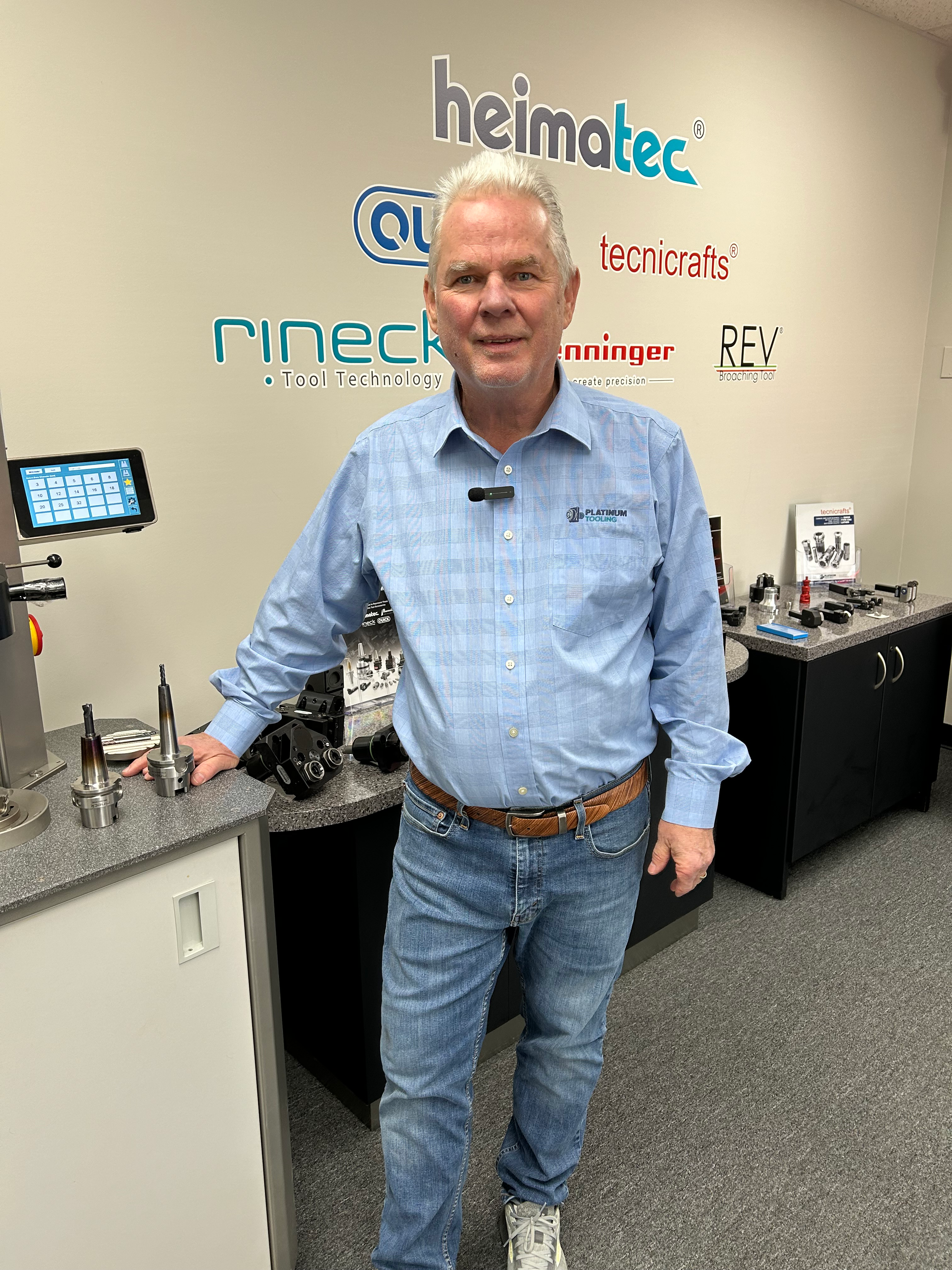
To help visiting sales representatives, agents, and members of the trade press learn more about its lines of precision machine tool accessories, Platinum Tooling Inc. has created a showroom at its distribution facility in Prospect Heights, Illinois.
The company’s product lines include live tools and angle heads from heimatec GmbH; Swiss-type collets and guide bushings from Tecnicrafts Industries; spindle speeders from Henninger GmbH u. Co. KG; Quick knurling and marking tools from Hommel + Keller Präzisionswerkzeuge GmbH; shrink-fit toolholders and machines from Rineck GmbH Maschinenbau; specialty and adaptive guide bushing systems from Dunner AG; and broaching tools from REV s.r.l. unipersonale.
Most recently, Platinum Tooling announced that it is the North American importer of hydraulic clamping tools from Gewefa Josef C. Pfister GmbH & Co. KG. This line includes ER hydraulic chucks and front- and back-side actuation tooling for Swiss-style CNC lathes.
Preben Hansen, president and owner of Platinum Tooling, said the Gewefa line fits well within the company’s core market, which includes customers who use both lathes and mills, as well as a significant number of Swiss-style machines. The quick-change hydraulic clamps offer high accuracy, vibration damping, enhanced flexibility, and through-coolant capabilities. For live tools, options are available in both internal and external collet nut styles. The Gewefa offerings are designed to be compatible with heimatec live tools, providing an alternative toolholding system to ER collets.
“We like high-end products,” Hansen said.
He noted that while heimatec live tools and angle heads remain Platinum Tooling’s top-selling products and the core of its business, the company’s full range of offerings helps customers solve challenging applications and improve productivity. For example, a manufacturer of mechanical splicing products was able to eliminate the use of robots for secondary marking operations by incorporating a Quick marking tool into the machining process. This integrated solution allows workpieces to be identified in seconds.
Contact Details
Related Glossary Terms
- broaching
broaching
Operation in which a cutter progressively enlarges a slot or hole or shapes a workpiece exterior. Low teeth start the cut, intermediate teeth remove the majority of the material and high teeth finish the task. Broaching can be a one-step operation, as opposed to milling and slotting, which require repeated passes. Typically, however, broaching also involves multiple passes.
- bushing
bushing
Cylindrical sleeve, typically made from high-grade tool steel, inserted into a jig fixture to guide cutting tools. There are three main types: renewable, used in liners that in turn are installed in the jig; press-fit, installed directly in the jig for short production runs; and liner (or master), installed permanently in a jig to receive renewable bushing.
- collet
collet
Flexible-sided device that secures a tool or workpiece. Similar in function to a chuck, but can accommodate only a narrow size range. Typically provides greater gripping force and precision than a chuck. See chuck.
- computer numerical control ( CNC)
computer numerical control ( CNC)
Microprocessor-based controller dedicated to a machine tool that permits the creation or modification of parts. Programmed numerical control activates the machine’s servos and spindle drives and controls the various machining operations. See DNC, direct numerical control; NC, numerical control.
- knurling
knurling
Chipless material-displacement process that is usually accomplished on a lathe by forcing a knurling die into the surface of a rotating workpiece to create a pattern. Knurling is often performed to create a decorative or gripping surface and repair undersized shafts.


